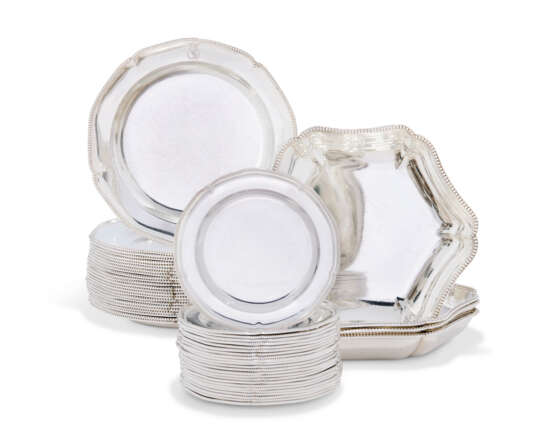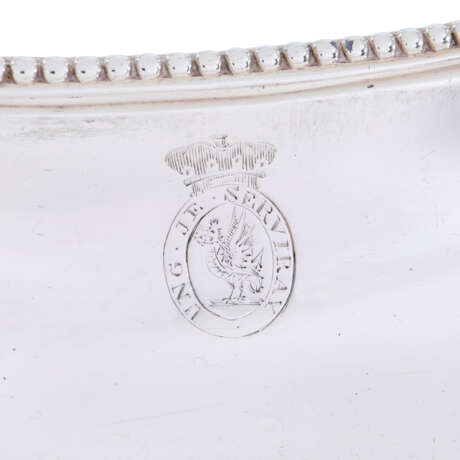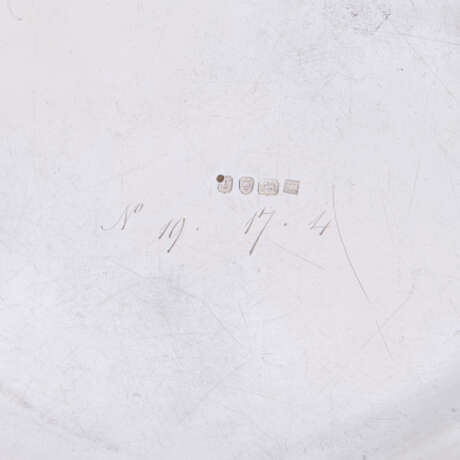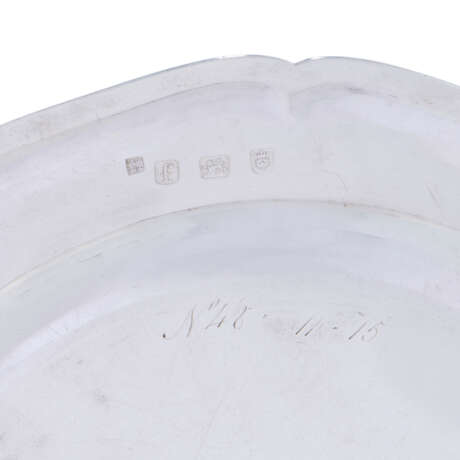A SET OF TWENTY-FOUR GEORGE III SILVER DINNER PLATES AND FOUR ENTREE DISHES, EN SUITE, WITH A SET OF TWENTY-FOUR SIDE PLATES
09.04.2025 11:00UTC +00:00
Classic
Sold
12600GBP £ 12 600
| Auctioneer | CHRISTIE'S |
|---|---|
| Event location | United Kingdom, London |
| Buyer Premium | see on Website% |
Archive
The auction is completed. No bids can be placed anymore.

ID 1400562
Lot 469 | A SET OF TWENTY-FOUR GEORGE III SILVER DINNER PLATES AND FOUR ENTREE DISHES, EN SUITE, WITH A SET OF TWENTY-FOUR SIDE PLATES
Estimate value
£ 10 000 – 15 000
Twenty-four dinner plates, shaped circular, mark of Daniel Smith and Robert Sharp, 1781, marked underneath and engraved underneath with No 28 11:8 / No 29 12:16 / No 31 12:10 / No 33 12:7 / No 34 12: / No 35 11:91/2 / No 36 12:6 / No 37 11:9 / No 38 11:13 / No 39 11:9 / No 40 12:2 / No 41 12:11 / No 42 12:9 / No 43 10:17 / No 44 12: / No 45 11:12 / No 46 12:8 / No 47 12:16 / No 48 11:15 / No 49 12:16 / No 50 12:5 / No 51 12:9 / No 52 12:3 / No 53 12:9
Four hexagonal shaped entree-dishes, marked underneath: two with mark of Daniel Smith and Robert Sharp, London, 1782, engraved underneath No 19 17:14 and No 20 17:12, and two with mark of Robert Sharp, London, 1796;
Together with twenty-four matching side plates, marked underneath: Tessiers ltd, London, 1968 and stamped Tessiers / London
The plates: 91/8 in. (23 cm.) and 6 in. (15.2 cm.); the dishes 91/2 in. (24 cm.)
478 oz. 17 dwt. (14,895 gr.)
The crest is that of Herbert, for Henry Herbert, 1st Baron Porchester of Highclere, co. Southampton, later 1st Earl Carnarvon (1741-1811). He was created a baron in 1780 and elevated to an earldom in 1793.
| Artist: | Robert Sharp |
|---|---|
| Medium: | Silver |
| Place of origin: | England |
| Auction house category: | Plates & Dishes, Plates |
| Artist: | Robert Sharp |
|---|---|
| Medium: | Silver |
| Place of origin: | England |
| Auction house category: | Plates & Dishes, Plates |
| Address of auction |
CHRISTIE'S 8 King Street, St. James's SW1Y 6QT London United Kingdom | |
|---|---|---|
| Preview |
| |
| Phone | +44 (0)20 7839 9060 | |
| Buyer Premium | see on Website | |
| Conditions of purchase | Conditions of purchase |















